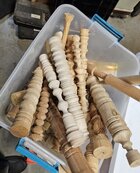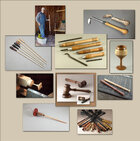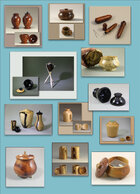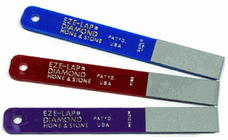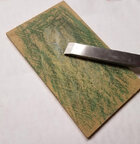HI,
I am trying to find the brand of a repirator mask that I saw once in a wood safety class.
It was a cloth mask with a pocket in which you could put replaceable filters.
While I have a PAPR it is not always convenient to have at the various locations I work at.
As best I recall it had three letters in its name.
I currently use a 3m with the two rectangular filters, and I think that the other one would be as effective and more comfortable.
*********
Also, I think I once stumbled across an excellent wood table that listed nearly every wood, their hardness, workability health issues and just about anything you would wqant to know.
If I did, I was never able to find it again. As it stands now, I have to go to a supplier's website and and jump back and forth between differrent woods. If I could simply look at one page life would be a lot eassier.
**(***
I'm concentrating on spindle turning at the moment.
I started turning maple, found that walnut an Mahogony were much easier to work with, and then discovered Black Limba, which was like getting a cheat sheet.
I'm beginning to get the shapes I like consistently, so it's great to learn on.
But, it's I can't think of any better word for it, it's kind of porous.I'm still just turning, not finishing right now, but I'm wondering how to overcome that aspect of it.
Thank you for any advise or help you can provide.
Jim Benson
I am trying to find the brand of a repirator mask that I saw once in a wood safety class.
It was a cloth mask with a pocket in which you could put replaceable filters.
While I have a PAPR it is not always convenient to have at the various locations I work at.
As best I recall it had three letters in its name.
I currently use a 3m with the two rectangular filters, and I think that the other one would be as effective and more comfortable.
*********
Also, I think I once stumbled across an excellent wood table that listed nearly every wood, their hardness, workability health issues and just about anything you would wqant to know.
If I did, I was never able to find it again. As it stands now, I have to go to a supplier's website and and jump back and forth between differrent woods. If I could simply look at one page life would be a lot eassier.
**(***
I'm concentrating on spindle turning at the moment.
I started turning maple, found that walnut an Mahogony were much easier to work with, and then discovered Black Limba, which was like getting a cheat sheet.
I'm beginning to get the shapes I like consistently, so it's great to learn on.
But, it's I can't think of any better word for it, it's kind of porous.I'm still just turning, not finishing right now, but I'm wondering how to overcome that aspect of it.
Thank you for any advise or help you can provide.
Jim Benson

